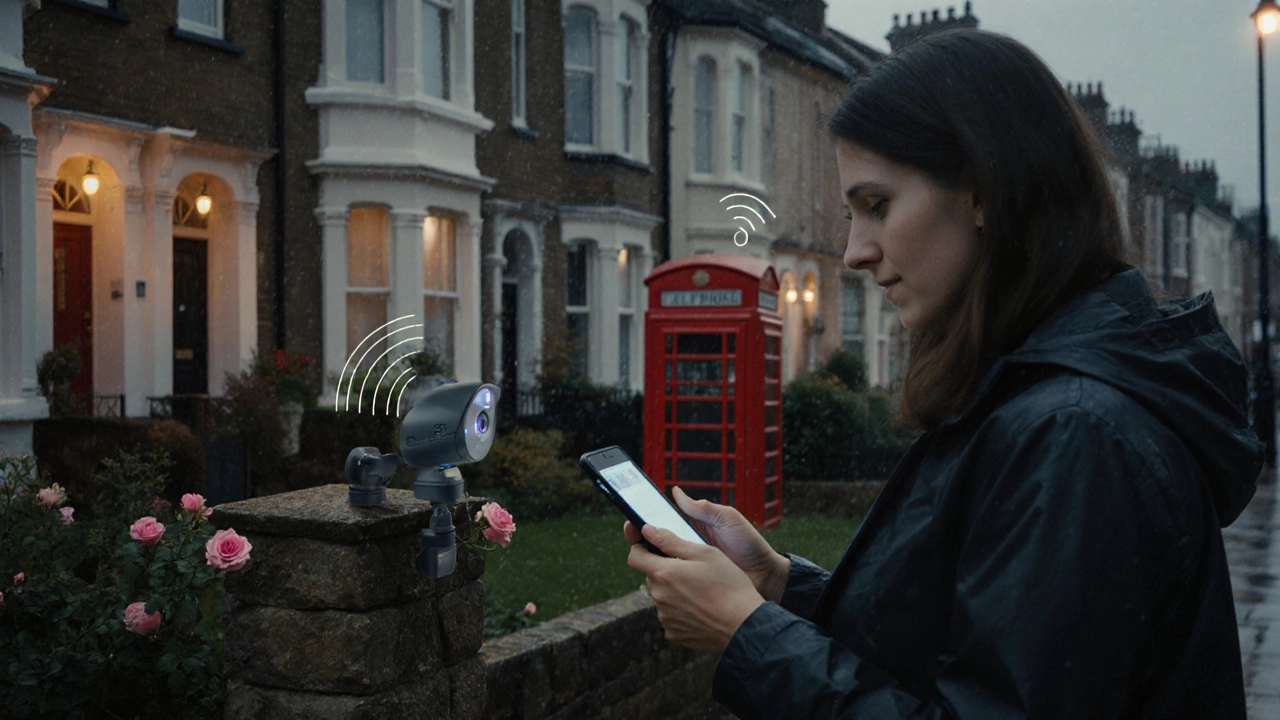Thinking about adding a camera that talks to your router? Wi‑Fi security cameras are the go‑to choice for most UK homeowners because they’re easy to set up and work with the apps you already use. You don’t have to run coax or bury cables – just plug the camera in, connect it to your Wi‑Fi, and you can see live video on your phone or tablet.
Before you jump in, consider three things: signal strength, power source, and how you’ll store the footage. If the signal drops, your video will freeze or go offline, which defeats the purpose. A camera that runs on mains power will stay on during a blackout, while battery‑powered units are great for spots without an outlet but need regular charging.
Start by matching the camera to the area you want to watch. For front doors, look for a 1080p model with night‑vision LEDs and a wide field of view – that way you capture faces and packages. For a backyard, you’ll need a longer range and possibly an outdoor‑rated housing that can handle rain and wind.
Resolution matters, but don’t let it drive you crazy. 2K cameras give sharper details but use more bandwidth, which can slow down other devices on a busy home network. If your internet plan caps data, a 1080p camera with motion‑triggered recording is a balanced choice.
Storage is another decision point. Cloud plans are convenient, but they add a monthly fee. Local SD cards keep everything in the device, but you’ll need to check them regularly and replace them when full. Many brands now offer hybrid options – footage is saved locally first, then uploaded to the cloud when you have a good connection.
Pick a spot where the Wi‑Fi signal is strong. A router in the living room usually covers the front door and porch, but the garden shed might need a Wi‑Fi extender or a dedicated power‑over‑Ethernet (PoE) injector.
Mount the camera at a height that captures faces but stays out of reach of pranksters. A good rule of thumb is 7‑10 feet for static cameras and 4‑6 feet for doorbell models that need a clear view of visitors.
After the hardware is up, lock down the software. Change the default admin password, enable two‑factor authentication, and turn off any services you don’t use (like remote access from unknown devices). Regularly update the firmware – manufacturers release patches that fix security holes.
If privacy is a concern, use the camera’s built‑in privacy zones to mask windows or neighbor properties. Most apps let you set schedules, so the camera can stay off during your own bedtime if you prefer.
Finally, test the whole system. Walk past the camera, check the live feed on your phone, trigger motion alerts, and confirm you get an email or push notification. A quick test reveals weak spots before a thief exploits them.
Wi‑Fi security cameras bring convenience, but they work best when you treat them like any other smart device: pick the right hardware, give it solid power and network, and lock it down with strong passwords and updates. Follow these steps and you’ll have a reliable eye on your home without the hassle of cables or hidden fees.

Explore whether all security cameras need Wi‑Fi, learn the differences between wireless, wired, and hybrid models, and discover the best setup for your home.